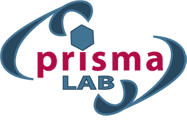Following the path prevention‒diagnosis‒treatment‒convalescence, it is easily understood how robotic technologies can make a significant contribution both to improving the quality of care and to savings in public health costs. Prevention is enhanced by using telepresence devices to be used in hospitals, allowing remote communication, psychological support for patients and their assistance without the direct intervention of medical staff. Diagnosis is amended by introducing more accurate and more extensive screening systems of patients, both local and remote, e.g. robotic biopsies and satellite centres for tele-echography inspections. The current robotic surgery systems gain ground by the adoption of high-quality intervention solutions at a reduced cost. Robotic aids help maintain the independence and active life of the elderly, as well as they allow for early diagnosis of pathologies, care of patients at home during convalescence after surgery, supervision of drug use, carrying out continuous cycles of rehabilitation therapies.
EndoTheranostics
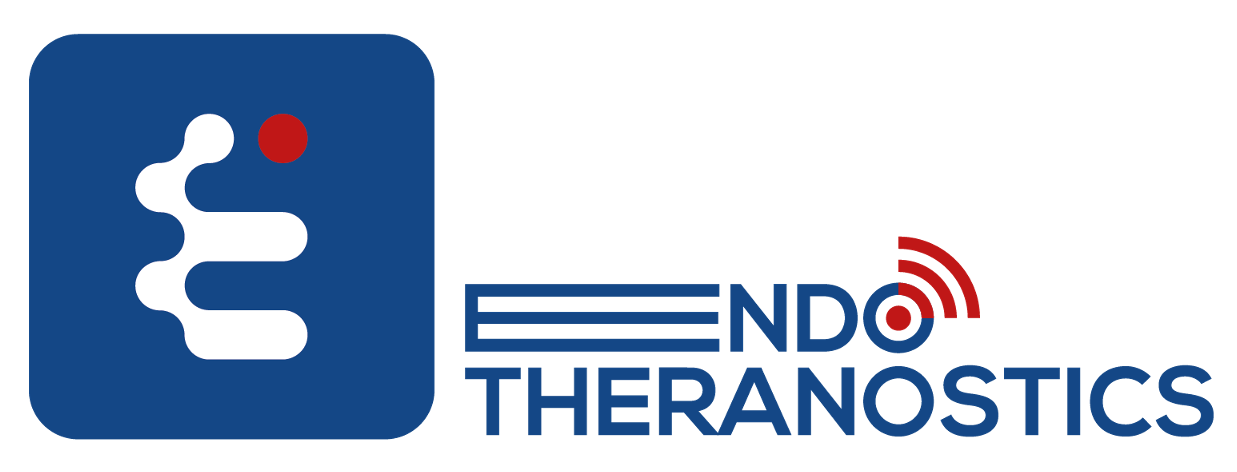
- EndoTheranostics — Multi-sensor Eversion Robot Towards Intelligent Endoscopic Diagnosis and Therapy
- July 2024 - June 2030
- 10,000,000 €
- website
Colorectal cancer (CRC) represents a significant proportion of malignant diseases. Interventions are often carried out during the latter stages of development, leading to low patient survival rates and poor quality of life. In 2022 a European Commission report stated that “colonoscopy-based screening has higher sensitivity than testing for blood in stool, but it is less acceptable to participants”. At the same time, effective methods to treat polyps in the colon are limited. Current approaches are often associated with unsafe oncological margins and high complication rates, requiring life-changing surgery. EndoTheranostics will usher in a new era for screening colonoscopy, advancing the frontiers of medical imaging and robotics. A tip- growing or eversion robot with a sleeve-like structure will be created to extend deep into hollow spaces while perceiving the environment through multimodal imaging and sensing. It will also act as a conduit to transfer miniaturised instruments to the remote site within the colon for diagnosis and therapy (theranostics). With these capabilities, the system will be able to offer: 1. painless colon cleansing in preparation for endoscopy; 2. real-time polyp detection and tissue characterisation through AI-assisted multimodal imaging; 3. effective removal of polyps by conveying a “miniature mobile operating chamber” equipped with microsurgical tools to the target through the lumen of the eversion robot. The unique technical and clinical challenges will be tackled by the PIs, each bringing complementary skills, backed by their institutions with wide expertise and exceptional facilities. The synergy and added value evident in this team will lead to breakthroughs not possible through independent research. The outcomes of EndoTheranostics will revolutionise the theranostics of CRC, impacting the quality of life of millions of individuals. Ultimately it will launch a new era for endoluminal intervention with applications beyond medicine.
LeCoR-PROC
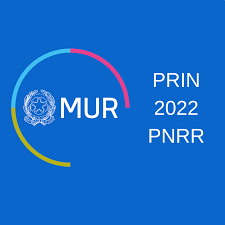
- Learn a Cognitive framework to build a Robotic PROCtor
- November 2023 - October 2025
- 240,286 €
Surgical techniques have been significantly changed by robotics. Enhanced dexterity, ergonomics, motion scaling, and tremor filtering are some of the improvements over traditional laparoscopy. The surgeon must acquire sufficient knowledge and abilities in order to use the robot safely and effectively, and novice surgeons always receive intensive training in virtual and simulated environments. Surgeons' proctoring (a proctor is an instructor who is responsible for the actions of other surgeons) allows hospitals to maintain standardized surgical treatment quality across several sites. Severe issues may occur due to the extremely dynamic and safety-critical environment. By directing the leading surgeon toward the most effective intervention, surgical proctoring enables sustaining high-quality intervention, intervening physically or verbally in crucial moments. However, certified expert proctors are becoming extremely limited in opposition to the demand for high-quality robotic surgical training. For these reasons, an intelligent robotic system could provide great benefits in proctoring and surgical training. Additionally, advanced computer vision algorithms and novel control techniques incorporate components that lessen the physical and mental stress on the surgeon and improve the efficiency of surgical procedures. This research intends to provide effective approaches that allow the robot to gain expert cognitive and procedural surgical abilities while assisting surgeons throughout procedures, similarly to an experienced proctor. Surgeon's body measures, such as: kinetic movements of upper limbs, cardiac electrical activity, muscular electrical activity, breathing activity, electrodermal activity, as well as surgical site information (extracted from endoscopic images) represent powerful tools to identify and quantify surgeon skills and proctor functions in order to develop novel training technologies and advanced assistive robot control overcoming the teleoperation paradigm. Advanced wearable sensor technology and motion capture cameras, will be utilized to monitor the physical states of the proctors and surgeons. Three distinct surgeon categories will be explored, each categorized according to their level of expertise (expert, intermediate, and novice). Data will be collected during ordinary surgical operations and tutoring sessions using the da Vinci Xi. The developed innovative assistive technologies will be tested on the da Vinci Research Kit and simulation environments. Data analysis will yield quantitative indices, with the key parameters being the execution time and intervention quality. Artificial Intelligence techniques will be utilized to process the acquired data and establish a reference set, allowing the robotic system to learn where, when, and how to act like an expert surgeon. As a result, the robot can react and support the surgeon in real-time by employing verbal and acoustic signals and advanced assistive control strategies.
DARC

- Dexterous Assistive Robots for Improved Human HealthCare
- November 2023 - November 2025
- 113.218 €
During the last years, the healthcare industry has experienced severe shortages in healthcare staff, leading to diminished attention to best practices for patient care. Many simple time-consuming activities, such as serving meals to patients or delivering lab samples and collecting medicine from the pharmacy, increased the shortage problem by redirecting human resources from direct patient care areas to less specialized jobs. In this scenario, introducing robots may help to mitigate this problem. Mobile robot manipulators have the potential to become the cost-effective enabling technology to assist healthcare staff and caregivers, relieving them from repetitive daily low-expertise tasks as well as mitigating risks arising from uncomfortable and stressful working conditions. Robots can dramatically improve healthcare industry efficiency by carrying meals, supplies, medicine, and linens around. To enable this potential, mobile robots need enhanced dexterous manipulation skills to operate seamlessly in the healthcare field. The DARC (Dexterous Assistive Robots for Improved Human HealthCare) project will tackle the problem of food delivery through mobile robots endowed with tactile-based manipulation skills. Robotic platforms that transport trays in an indoor environment are commercially available solutions. However, the tray setting and its delivery to the patient are still carried out by professionals who, instead of this tedious task, may direct their effort toward the actual patient care, instead. The main aim of this project is to develop and integrate novel paradigms, algorithms, and tools to enable autonomous, safe and robust mobile robots to manipulate and transport food in clinics and hospitals. We envision mobile robots able to operate close to humans and perform complex manipulation tasks, i.e., assembling, transporting, and serving meals on a tray to a patient in bed. The realistic achievement of this vision requires answering various research questions on how force/tactile and vision sensors can enable robust whole-body control for bimanual manipulation in both a prehensile and non-prehensile way. The related challenges can be achieved by pursuing specific research objectives about using multimodal sensing for advanced grasping and manipulation and whole-body control of a mobile manipulator able to furnish and deliver a food tray in a hospital ward. The expected technological output is a robot platform for food delivery in hospital wards. The expected impact concerns improving the quality of the healthcare staff’s working conditions; consequently, the outcomes will be measurable in terms of patient care.
TI-RED

- Towards Intelligent Robotic Endoscopic Dissection
- September 2023 - August 2025
- 141,402 €
Digestive tract cancers make up a significant proportion of malignant diseases. Interventions are often carried out during the latter stages of development, leading to low patient survival rates and poor quality of life. Among these, colorectal cancer (CRC) remains a killer as people tend to avoid colonoscopy screening programs that are often perceived as painful and uncomfortable. Effective methods to treat dysplastic polyps in the colon are limited and current approaches are often associated with unsafe oncological margins and high complication rates, often requiring life-changing surgery. TI-RED will usher in a new era for screening colonoscopy, advancing the frontiers of robotic surgery and medical imaging research. A miniaturized surgical robot will be created to be fixed at the tip of a small endoscope so that it can extend deep into hollow spaces whilst perceiving the environment through multimodal imaging and sensing. With these capabilities, the system will be able to offer: a. real-time tissue characterisation through AI-assisted multi-spectral imaging and ultrasound; b. the effective removal of polyps using a ‘miniature operating chamber’ equipped with microsurgical tools c. supervised automatic polyp dissection by deep learning methods for object recognition and segmentation. TI-RED will advance science in the fields of microsurgical robotics, focusing on the unmet clinical needs of a socially relevant disease: colorectal cancer (CRC). TI-RED will push the boundaries of minimally invasive robotic surgery beyond the state-of-the-art, solutions to perceiving and interacting with the environment for robots while operating within otherwise inaccessible spaces. TI-RED aims to obviate the need for major surgery and reduce mortality rates. The synergy and added value evident in this team and in the partners will lead to breakthroughs. TI-RED will revolutionise CRC treatment, positively impacting the quality of life for about 2 million individuals/year worldwide.
Exoskeleton-assisted walking for prehabilitation and active aging

- Exoskeleton-assisted walking for prehabilitation and active aging
- September 2023 - August 2025
- 204,471 €
With aging, many biological processes influencing the musculoskeletal system strongly affect peoples’ strength and endurance capacities, as well as abilities in coordination, stability, and balance. Therefore, gait disorders and lower-limb impairments are common and often devastating companions of aging, limiting people’s independence in daily activities. Although the relationship between age and physiological and physical functions is very complex, it has been widely shown that physical abilities are generally superior in physically active people. Inspired by the concept of “prehabilitation”, this project aims to promote active lifestyles based on regular moderate-intensity physical training that could help elderly people limit the gradual decay of physical functions due to aging, through lightweight and portable wearable robots. More specifically, this project aims to design and validate completely novel paradigms of enhanced gait training programs based on robotic exoskeletons with high-fidelity impedance performance, that could provide adaptive training programs in functional tasks. This project opens new chances to apply wearable robots in the field of “active aging”, which represents a new application domain for wearable robots, traditionally investigated in other fields, e.g., rehabilitation, assistance, and occupational sectors.
ARIEL

- Assistive Robotics for Impaired and Elderly peopLe
- September 2023 - September 2025
- 117,464 €
The expected shortage of human caregivers, compounded by the increasingly ageing population in western societies and the rapid changes in disease and rehabilitation patterns, demands cost-effective autonomous solutions to support caregivers in their daily activities. Mobile manipulators have the potential to become the enabling technology that relieves caregivers from repetitive daily tasks and risks arising from uncomfortable working conditions. At the same time, mobile manipulators can offer adequate physical support to elderly and impaired people. To unlock the full potential of mobile robotic manipulators, we need to re-imagine mobile manipulation as a unicum problem and tackle it from an entirely new perspective. ARIEL tackles the challenging problem of mobile nonprehensile manipulation, which can be considered one of the most complex and dexterous manipulation tasks. ARIEL aims to develop and integrate novel paradigms, algorithms, and tools enabling safe and robust mobile manipulation in Assistive Robotics for Impaired and Elderly peopLe, where autonomous robots operate close to humans and interact with uncertain and unstructured environments. Robot control is widely recognised as one of the key enabling technologies for current mobile manipulation applications. In parallel, learning approaches effectively solve challenging problems in highly unstructured environments. Their synergistic integration into a new learning for control framework is the vision of this project to unlock a range of new applications in advanced mobile manipulation. The achievement of this vision demands the development and evaluation of new solutions, namely: 1. whole-body compliance control strategies robust to uncertainties and robot’s physical limitations; 2. dexterous robotic manipulation able to fulfil routine needs; 3. learning strategies whose outcome is predictable in all the stages of the learning process; 4. incremental system identification approaches to reduce the uncertainty of the system under control; 5. certifiable and non-over conservative strategies that make the learning for control helpful in a wide range of practical situations. We identify everyday healthcare tasks like serving meals or pushing a trolley filled with goods. These are the main inspiring applications for this proposal, whose aim is to realise an autonomous mobile manipulator capable of operating in different conditions, adapting to changes in the environment, and the age and level of impairment of people to assist. These challenges are addressed by a methodological approach that combines strategies from different fields in a mathematically principled manner. This is enabled by a unique team of researchers with complementary expertise in control and learning. The project outcome will significantly impact future mobile platforms, and it will allow identifying commercial and exploitation opportunities to benefit society.
Age-It

- Ageing well in an ageing society
- January 2023 - December 2025
- 12,553,947.5 €
- website
Population ageing is a global phenomenon reshaping societies, markets, and welfare systems, especially in high-income countries. In Italy, with one of the highest life expectancies in the world, ageing represents both a challenge and an opportunity to enhance well-being and social sustainability. Age-It aims to position Italy as a leader in ageing research, overcoming barriers such as data fragmentation and lack of interdisciplinary collaboration. Through a holistic, collaborative approach, Age-It brings together universities, institutions, businesses, and public and private entities to create innovative solutions that promote healthy, inclusive ageing. The key objectives are: 1. Defining Research Standards: Establish an interdisciplinary framework for global ageing research. 2. Promoting Innovation: Create sustainable technological solutions, fostering start-ups and spin-offs. 3. Reforming Welfare: Develop policies to reduce inequalities and promote equitable ageing. 4. Training New Generations: Educate interdisciplinary researchers, focusing on disadvantaged regions. 5. Connecting Academia and Industry: Accelerate the translation of research into practical solutions. Age-It’s transdisciplinary approach spans fields such as geriatrics, data science, engineering, sociology, and economics, creating a unique platform to pioneer new methodologies and solutions. From advancing the Silver Economy to redefining care models and public policies, Age-It aims to transform ageing into a cornerstone of economic, social, and environmental progress.
Fit4MedRob

- Fit for Medical Robotics
- December 2022 - November 2026
- 13,163,926 €
- website
Fit4MedRob aims to revolutionize current rehabilitation and assistive models for people with reduced or absent sensory or cognitive motor functions. We will develop new (bio)robotic and digital technologies and continuum of care paradigms that can benefit from new technologies in all phases of the rehabilitation process, from prevention to home assistance in the chronic phase. This will be possible by carefully identifying the unmet needs of patients and healthcare professionals. Such needs will be addressed with current and new (bio)robotic/bionic technologies, through multi-centre clinical studies jointly designed by bioengineers, neuroscientists, physiatrists, psychologists and functional specialists/preventive surgeons of arts. Fit4MedRob will focus on both already available technologies that have not yet been fully validated, and emerging technologies or breakthrough ideas to be explored in the course of the project. Fundamental studies, involving new materials, algorithms, smart sensing and actuation technologies, and sustainable energy sources, will try to overcome the limitations of current robotic solutions, which have prevented their massive diffusion as providers of physical assistance. The ambitious goal of the project is to pave the way for the next generation of biomedical robotic systems. Last but not least, clinical, scientific and technological efforts will be matched on the political, regulatory and organizational side to accelerate the creation of an adequate framework to (sustainably) incorporate current and future technologies and protocols into the healthcare system while supporting the innovation they will bring.
BRIEF

- Biorobotics Reserach & Innovation Engineering Facilities
- October 2022 - February 2025
- 4,753,057 €
The project aims to enhance the research infrastructures on surgical robotics and to create a new infrastructure for biorobotics thanks to the creation of a new laboratory: Biomimetic and Biohybrid Robotics Lab (B2RL). B2RL will provide a framework for the design and fabrication of prosthetics and exoskeletons as biological interfaces for communicating with the human body. This includes the adoption and composition of biohybrid and biomimetic materials and design methods, biocompatible actuators and sensors, and the development of appropriate shared human-machine control strategies.
PACMAN
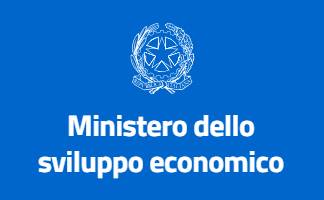
- Needle Holder with Handling Capability
- February 2021 - August 2022
- 75,000 €
HARMONY

- Enhancing Healthcare with Assistive Robotic Mobile Manipulation
- January 2021 - June 2024
- 7,191,613.75 €
- website
BARTOLO
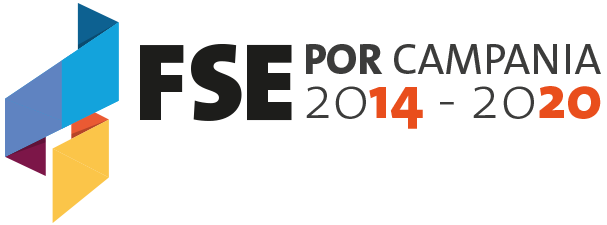
- Bioptic Adavanced Robotic Technologies in OncoLOgy
- October 2018 - February 2021
- 3,148,453 €
PROSCAN
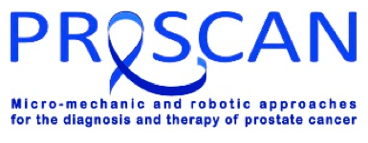
- Micro-mechanical and robotic tools for the diagnosis and therapy of prostate cancer
- April 2018 - October 2021
- 8,754,244 €
Prostate cancer (PCa) is the most frequent malignancy in men, with a worldwide incidence of 60-99 new cases/100,000 a year. In Italy, PCa represents 18% of male cancers and accounts for 8% of mortality. The aim of this project is to design and develop new medical devices to improve our ability to diagnose and cure PCa. First, we want to generate a high-precision device for prostate cancer biopsy, based on the implementation of a robotic arm allowing targeted bioptic sampling based on the information gained from magnetic resonance and ultrasound images. Second, we want to develop an advanced prototype for treatment of PCa, exploiting the selective effects of micro-mechanical vibration stress on tumor cells, thus killing them while sparing neighbour healthy cells. The robotic system for prostate-guided needle biopsy is conceived as a system capable of self-learning through the storage and processing of maps derived from prostatic imaging.
MUSHA
- MUltifunctional Smart HAnds: new technological insight for mini-invasive surgical tools and artificial anthropomorphic hands
- February 2017 - January 2019
- 95,000 €
- website
MUSHA aims at creating future generations of bio-inspired tools and advanced bio-aware manipulation paradigms toward breakthrough mini-invasive surgical instruments and android robotic hands. Bio-inspired mechanical design leads to reduction of tools’ weight and dimension by limiting the number of actuators while preserving dexterity and manipulation capabilities. A fiber optic sensor is to be integrated to measure the contact forces exchanged with the environment and the temperature of the touched materials. MUSHA arises from the need to replicate human manipulation capabilities in various fields where robotics can help to improve life. These include unstructured environments in which a humanoid robot must replace the human being or parts of the body to address daily-life tasks, as well as minimally invasive robotic surgery where the surgeon is unable to use hands to manipulate organs and tissues while feeling their anatomy, consistency and temperature.
